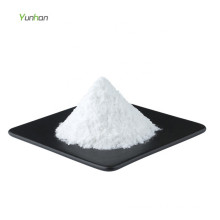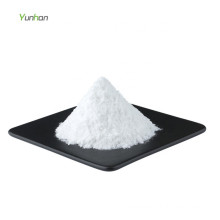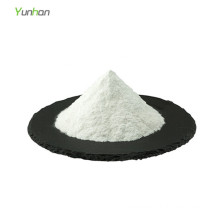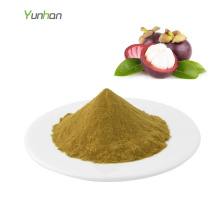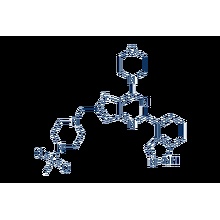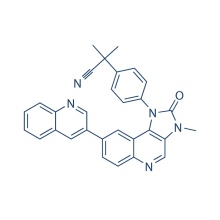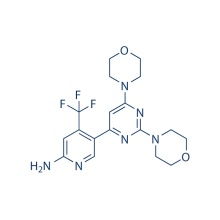A66 1166227-08-2
Product Description
.cp_wz table {border-top: 1px solid #ccc;border-left:1px solid #ccc; } .cp_wz table td{border-right: 1px solid #ccc; border-bottom: 1px solid #ccc; padding: 5px 0px 0px 5px;} .cp_wz table th {border-right: 1px solid #ccc;border-bottom: 1px solid #ccc; padding: 5px 0px 0px 5px;}
Molecular Weight: 393.53 A66 is a potent and specific p110α inhibitor with IC50 of 32 nM, >100 fold selectivity for p110α over other class-I PI3K isoforms.
In addition to the wild-type p110α, A66 also potently inhibits the
oncogenic forms of p110α such as p110α E545K and p110α H1047R with IC50
of 30 nM and 43 nM, respectively. Unlike PIK-75, A66 displays >100
fold selectivity for p110α over Other class-I PI3K isoforms. Among the
class-II PI3Ks, class-III PI3K and PI4Ks, A66 only exhibits limited
cross-reactivity with the class-II PI3K PI3KC2β and the PI4Kβ isoform of
PI4K with IC50 of 462 nM and 236 nM, respectively. A66 exhibits no
inhibitory activity against other lipid kinases or the related kinases
DNA-PK and mTOR. A66 has a higher degree of specificity compared with
PIK-75 when tested at 10 μM against two large panels of 110 protein
kinases and 318 kinases.
Inhibition of p110α alone by A66 treatment is
sufficient to block insulin signalling to Akt/PKB in certain cell lines
that harbor H1047R mutations in PIK3CA and have high levels of p110α and
class-Ia PI3K activity. A66 treatment at 0.7 μM induces a
75-80% reduction in focus formation by the highly transforming p85α
iSH2 mutants KS459delN, DKRMN-S560del, and K379E, and reduces the
phosphorylation of Akt on T308 by all p85 mutants.
A single dose of A66 at 100 mg/kg induces a profound reduction in the
phosphorylation of Akt/PKB and p70 S6 kinase, but not of ERK, in SK-OV-3
tumour tissue in vivo at both 1 hour and 6 hours after dosing. A66
dosed at 100 mg/kg once daily (QD) for 21 days or 75 mg/kg twice daily
(BID) for 16 days induces a significant delay in growth of SK-OV-3
xenografted tumors with average TGI of 45.9% and 29.9%, respectively,
which is even greater than that induced by the well-established pan-PI3K
inhibitor BEZ-235. QD dosing of A66 in the HCT-116 xenograft model also
induces a significant reduction in tumour volume with TGI of 77.2%, but
causes a non-significant reduction in tumor volume in the U87MG
xenograft model. Administration of A66 at 10 mg/kg in
male CD1 mice induces significant impairments in the ITT (insulin
tolerance test) and GTT (glucose tolerance test), and an increase in
glucose production during a PTT (pyruvate tolerance test), almost to the
same level as the pan-PI3K Inhibitors.
Animal Study: [1]
Conversion of different model animals based on BSA (Value based on data from FDA Draft Guidelines)
For example, to modify the dose of resveratrol used for a mouse (22.4 mg/kg) to a dose based on the BSA for a rat, multiply 22.4 mg/kg by the Km factor for a mouse and then divide by the Km factor for a rat. This calculation results in a rat equivalent dose for resveratrol of 11.2 mg/kg.
Chemical Information
Molarity Calculator
Dilution Calculator
Molecular Weight Calculator
Contact us if you need more details on A66 1166227-08-2. We are ready to answer your questions on packaging, logistics, certification or any other aspects about 1166227-08-2 A66、1166227-08-2. If these products fail to match your need, please contact us and we would like to provide relevant information.
Molecular Weight: 393.53 A66 is a potent and specific p110α inhibitor with IC50 of 32 nM, >100 fold selectivity for p110α over other class-I PI3K isoforms.
In addition to the wild-type p110α, A66 also potently inhibits the
oncogenic forms of p110α such as p110α E545K and p110α H1047R with IC50
of 30 nM and 43 nM, respectively. Unlike PIK-75, A66 displays >100
fold selectivity for p110α over Other class-I PI3K isoforms. Among the
class-II PI3Ks, class-III PI3K and PI4Ks, A66 only exhibits limited
cross-reactivity with the class-II PI3K PI3KC2β and the PI4Kβ isoform of
PI4K with IC50 of 462 nM and 236 nM, respectively. A66 exhibits no
inhibitory activity against other lipid kinases or the related kinases
DNA-PK and mTOR. A66 has a higher degree of specificity compared with
PIK-75 when tested at 10 μM against two large panels of 110 protein
kinases and 318 kinases.
Inhibition of p110α alone by A66 treatment is
sufficient to block insulin signalling to Akt/PKB in certain cell lines
that harbor H1047R mutations in PIK3CA and have high levels of p110α and
class-Ia PI3K activity. A66 treatment at 0.7 μM induces a
75-80% reduction in focus formation by the highly transforming p85α
iSH2 mutants KS459delN, DKRMN-S560del, and K379E, and reduces the
phosphorylation of Akt on T308 by all p85 mutants.
A single dose of A66 at 100 mg/kg induces a profound reduction in the
phosphorylation of Akt/PKB and p70 S6 kinase, but not of ERK, in SK-OV-3
tumour tissue in vivo at both 1 hour and 6 hours after dosing. A66
dosed at 100 mg/kg once daily (QD) for 21 days or 75 mg/kg twice daily
(BID) for 16 days induces a significant delay in growth of SK-OV-3
xenografted tumors with average TGI of 45.9% and 29.9%, respectively,
which is even greater than that induced by the well-established pan-PI3K
inhibitor BEZ-235. QD dosing of A66 in the HCT-116 xenograft model also
induces a significant reduction in tumour volume with TGI of 77.2%, but
causes a non-significant reduction in tumor volume in the U87MG
xenograft model. Administration of A66 at 10 mg/kg in
male CD1 mice induces significant impairments in the ITT (insulin
tolerance test) and GTT (glucose tolerance test), and an increase in
glucose production during a PTT (pyruvate tolerance test), almost to the
same level as the pan-PI3K Inhibitors.
| PI3K (human) HTRF Assay | The p110α isoform is produced in-house by co-expressing full-length human p85α with the indicated human full-length catalytic subunit containing a histidine tag at the N-terminus to allow purification. The p110α is titrated and used at a concentration between EC65-EC80 values. IC50 value is evaluated using the PI3K (human) HTRF Assay. |
|---|
Animal Study: [1]
| Animal Models | Age-matched specific pathogen-free Rag1-/- or NIH-III mice inoculated subcutaneously with U87MG, SK-OV-3 or HCT-116 cells | ||
|---|---|---|---|
| Formulation | Formulated in 20% 2-hydroxypropyl-β-cyclodextrin in water | ||
| Dosages | 100 mg/kg once daily (QD) or 75 mg/kg twice daily (BID) | ||
| Administration | Intraperitoneal injection | ||
| Solubility | 15% Captisol, 8 mg/mL | ||
| * Please note that Selleck tests the solubility of all compounds in-house, and the actual solubility may differ slightly from published values. This is normal and is due to slight batch-to-batch variations. | |||
Conversion of different model animals based on BSA (Value based on data from FDA Draft Guidelines)
| Species | Baboon | Dog | Monkey | Rabbit | Guinea pig | Rat | Hamster | Mouse |
| Weight (kg) | 12 | 10 | 3 | 1.8 | 0.4 | 0.15 | 0.08 | 0.02 |
| Body Surface Area (m2) | 0.6 | 0.5 | 0.24 | 0.15 | 0.05 | 0.025 | 0.02 | 0.007 |
| Km factor | 20 | 20 | 12 | 12 | 8 | 6 | 5 | 3 |
| Animal A (mg/kg) = Animal B (mg/kg) multiplied by | Animal B Km |
| Animal A Km |
For example, to modify the dose of resveratrol used for a mouse (22.4 mg/kg) to a dose based on the BSA for a rat, multiply 22.4 mg/kg by the Km factor for a mouse and then divide by the Km factor for a rat. This calculation results in a rat equivalent dose for resveratrol of 11.2 mg/kg.
| Rat dose (mg/kg) = mouse dose (22.4 mg/kg) × | mouse Km(3) | = 11.2 mg/kg |
| rat Km(6) |
Chemical Information
| Molecular Weight (MW) | 393.53 |
|---|---|
| Formula | C17H23N5O2S2 |
| CAS No. | 1166227-08-2 |
| Storage | 3 years -20℃Powder |
|---|---|
| 6 months-80℃in solvent (DMSO, water, etc.) | |
| Synonyms | |
| Solubility (25°C) * | In vitro | DMSO | 79 mg/mL (200.74 mM) |
|---|---|---|---|
| Water | <1 mg/mL ( | ||
| Ethanol | 1 mg/mL (2.54 mM) | ||
| In vivo | 15% Captisol | 8 mg/mL | |
| * <1 mg/ml means slightly soluble or insoluble. * Please note that Selleck tests the solubility of all compounds in-house, and the actual solubility may differ slightly from published values. This is normal and is due to slight batch-to-batch variations. | |||
| Chemical Name | (2S)-N1-(5-(2-tert-butylthiazol-4-yl)-4-methylthiazol-2-yl)pyrrolidine-1,2-dicarboxamide |
|---|
Molarity Calculator
Dilution Calculator
Molecular Weight Calculator
Contact us if you need more details on A66 1166227-08-2. We are ready to answer your questions on packaging, logistics, certification or any other aspects about 1166227-08-2 A66、1166227-08-2. If these products fail to match your need, please contact us and we would like to provide relevant information.
Product Categories : PI3K/Akt/mTOR > PI3K Inhibitor
Other Products
Hot Products
Astragaloside AChlortetracycline HCl 64-72-2Paclitaxel 33069-62-4Dexamethasone Acetate 1177-87-3Dinaciclib (SCH727965) 779353-01-4CHIR-124 405168-58-3Ro3280 1062243-51-9TAME 901-47-3CCG-1423 285986-88-110058-F4 403811-55-2Dabigatran (BIBR 953) 211914-51-1H 89 2HCl 130964-39-5T0901317 293754-55-9Aprepitant 170729-80-3Turofexorate Isopropyl (XL335) 629664-81-9BMS-378806 357263-13-9


